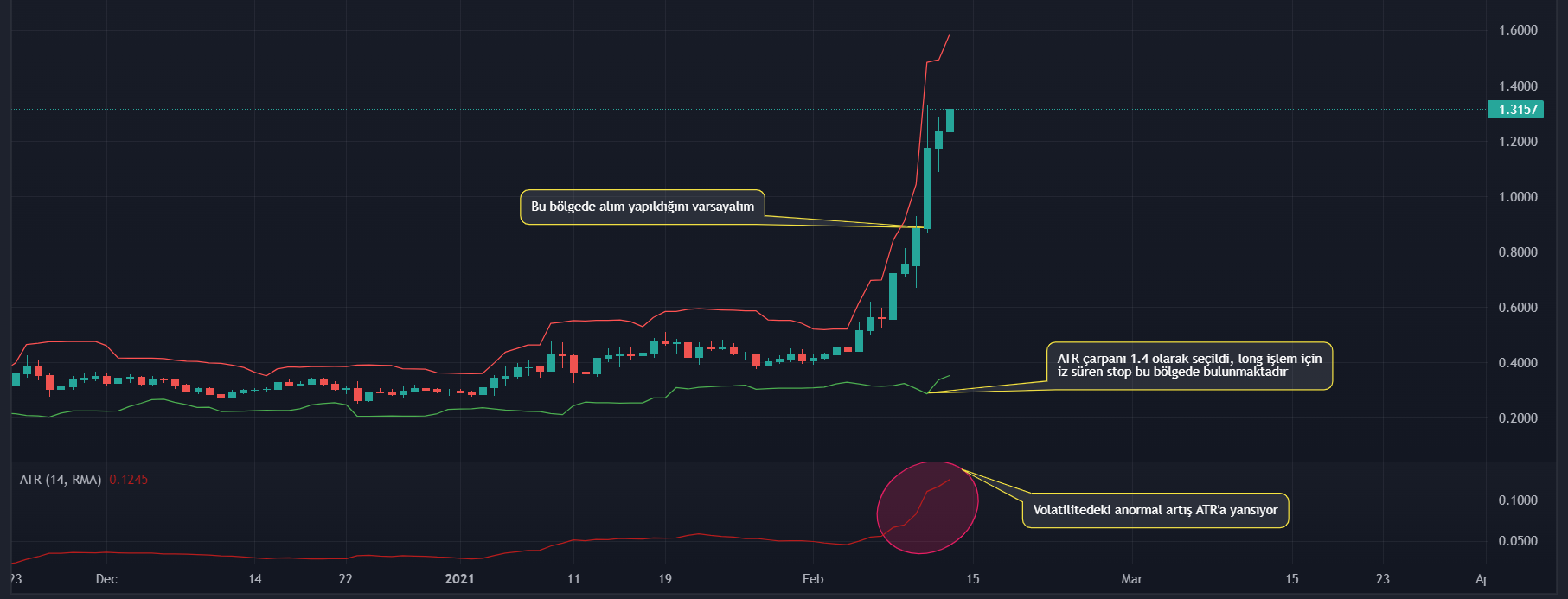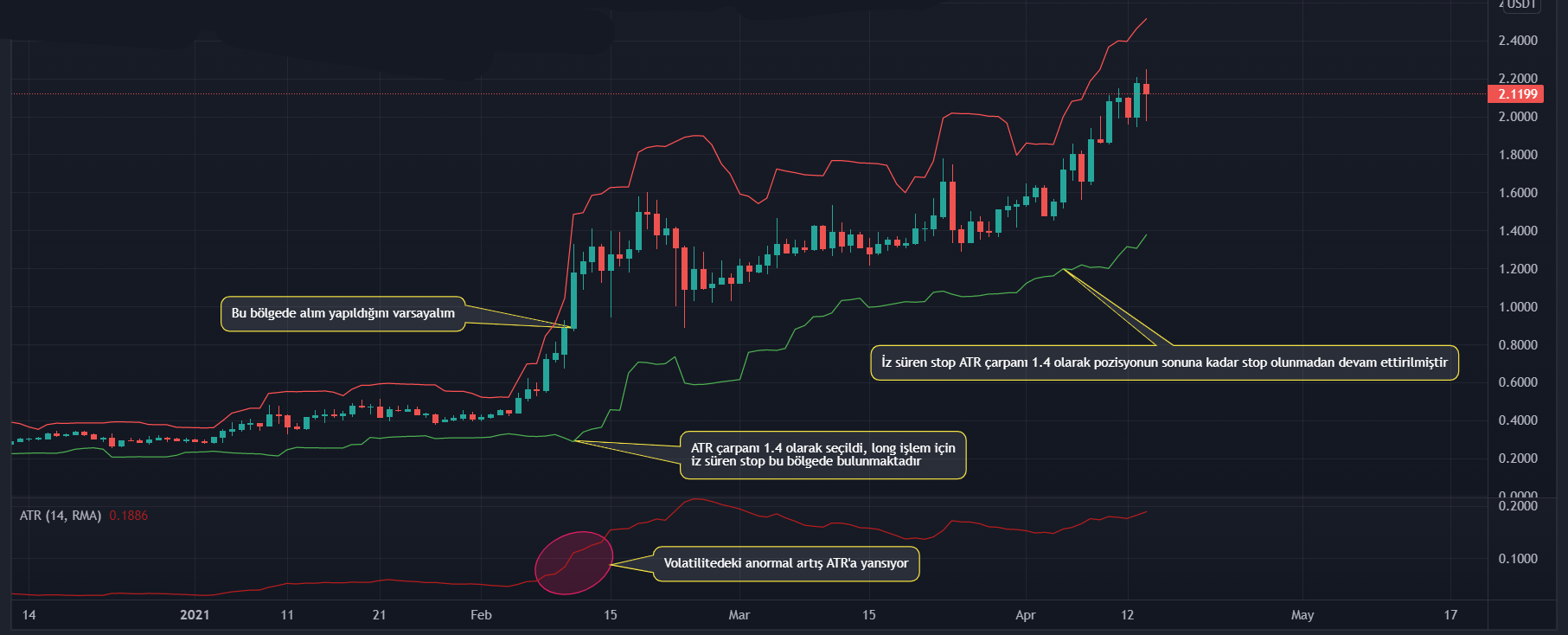What is the Average True Range (ATR) Indicator and How to Use It as a Professional Bitcoin Trader
Contents
Updated: March 26, 2023 at 08:47 AM UTC
In this article, we will discuss what the ATR indicator is, how to use it, and how to set stops with ATR, as well as how to set trailing stops with ATR. Here’s what you need to know about the ATR indicator…
What is the ATR Indicator?
The ATR is an indicator used to measure volatility in a given market or currency pair. The indicator does not provide information about price direction, but rather measures volatility over a specified period. The general period used is 14 units. The indicator tracks closely to the flat trend. An increase in the indicator’s value is expected during upward or downward movements.
How to Use the ATR Indicator
Setting Stops with ATR
 The above image is an educational study, and trades should not be entered using only ATR.
The above image is an educational study, and trades should not be entered using only ATR.
An investor who believes that the price has dropped to a certain level will purchase after receiving confirmation from various sources. When setting a stop, it is necessary to consider how volatile the currency pair is.
Since the ATR value in the purchased candle is 0.13, our investor sets a stop loss 0.13 units below. In the next candle, the price collects the above and below liquidity. Our investor, who sets a stop using ATR, knows that the currency pair is volatile, so they set a close stop, and it is seen that it reaches the desired profit target without being unnecessarily stopped out.
Setting Trailing Stops with ATR
Another use of the Average True Range indicator is the trailing stop method.
First, the ATR multiplier to be used must be determined. If it is set to a minimum of 1.2, there will be no unnecessary stops in volatile markets. Below, a stop is set using a 1.4 ATR multiplier. The trailing stop worked very well in response to the selling that came from the new peak point of the price.
The point to be noted is that the ATR multiplier should be determined according to the time frame to be examined. In other words, the ATR value on a 4-hour chart may differ significantly from that on a daily chart. Therefore, an ATR multiplier suitable for the time frame selected for the trade should be chosen. A range of 1 to 2.5 can be used for short-term trades, while 2.5 or higher can be used for long-term trades.
Lucien Renard
Comments
Yorumlar
Other Articles
Shenzhen’s Five-Year AI Plan Could Position City as Key Player in China-US Tech Race
December 30, 2025 at 03:43 PM UTC
SEI Consolidates Near $0.10 Support as TVL Recovers, Downside Risk Looms
December 30, 2025 at 04:16 AM UTC
Bitcoin Price Holds Near $87,500 Amid Fed’s $2.5B Liquidity, Breakout Possible
December 30, 2025 at 02:16 AM UTC


